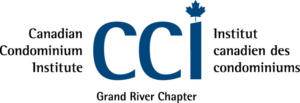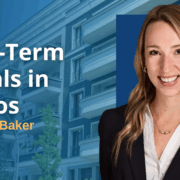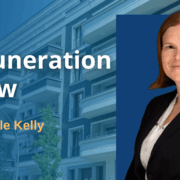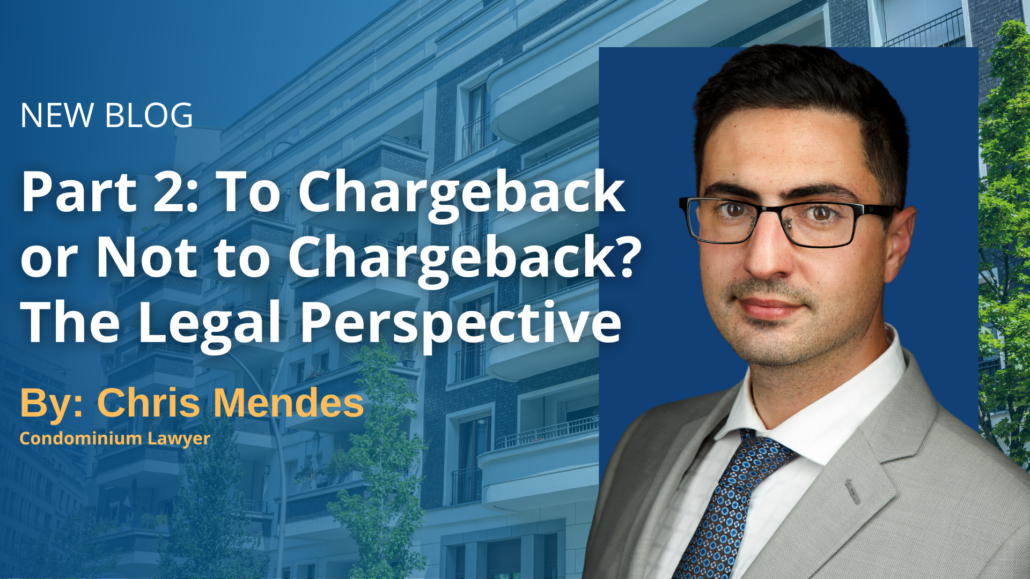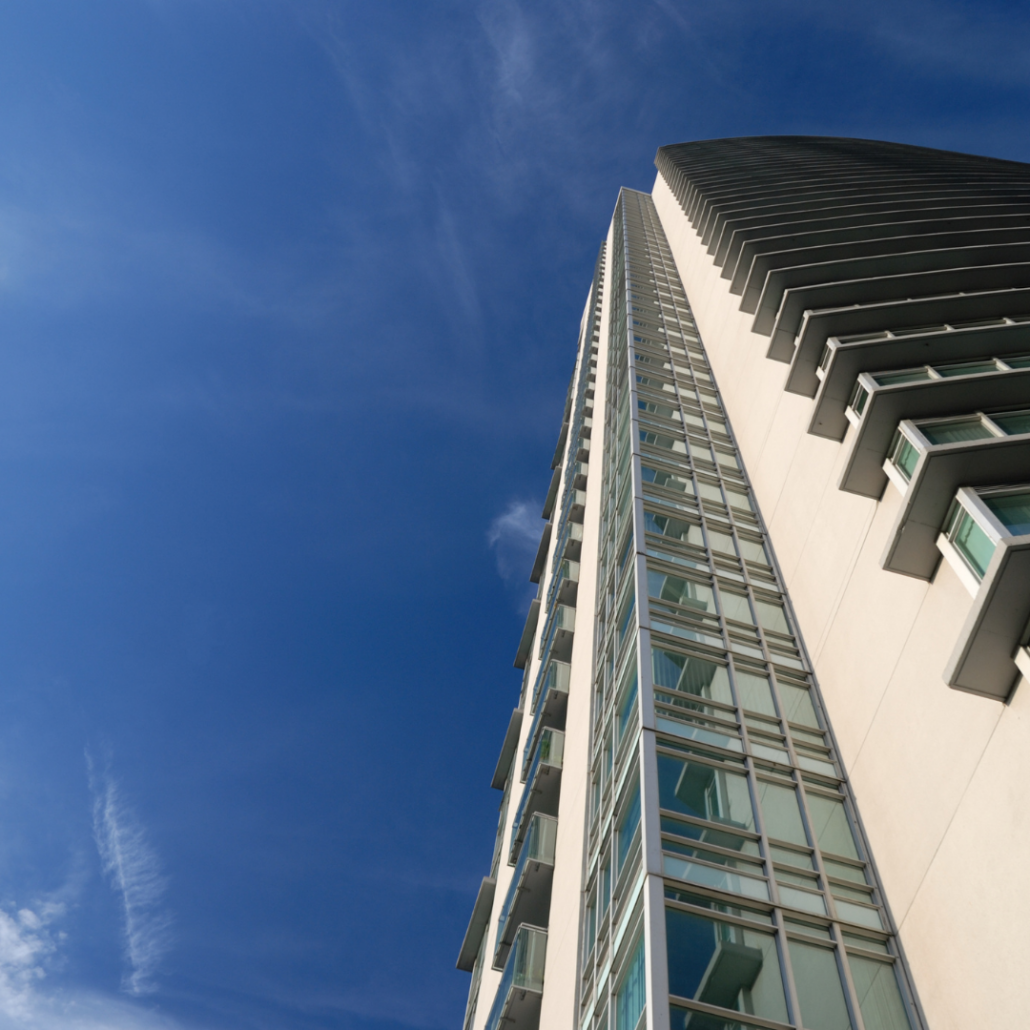Controlling Odour Transfer in Condominiums
WHAT ARE ODOURS?
Odours consist of molecules that float and are carried by air movement. Condominium occupants frequently complain of unwanted odours in their units: intruding smells of cigarettes, cooking, garbage, and the like.

HOW DOES AIR MOVE?
Outdoors, air (and the odours it carries) is moved by the wind – the neighborhood BBQ smells great downwind. In buildings or occupied spaces, however, air moves from high pressure areas to low pressure areas.
MOST COMMON DEFICIENCIES LEADING TO IMPROPER AIR FLOW AND ODOUR TRANSFER INSIDE BUILDINGS
• Undersized, improperly balanced, or intermittent running make-up air units
• Blocked exhaust vents in units or corridors
• Weather stripping on doors blocking fresh air flow into units
• Unsealed gaps between units
• Failed sealants on the exterior face of the building envelope
MISUSED VENTILATION SYSTEMS
All too commonly, the reporting owners have unknowingly aggravated the odour problem by running exhaust fans, creating a low-pressure environment which draws more odours into their unit. Instead, when cooking or smoking, the offending owners should be running exhaust fans to lower pressure and prevent odours spreading beyond their unit.
AIR FLOW WITHIN BUILDINGS
The movement of air in high-rise buildings is affected by man-made mechanical systems, building envelope openings, and seasonal effects
• Mechanical systems: – Make-up air units – Distribution louvers and ducting – Unit exhaust fans (bathroom and kitchen)
• Building envelope openings: – Windows/Doors – Envelope deficiencies
• Seasonal effects: – Winter – buildings are heated and the warm air rises, creating a HIGH pressure at the top half of the building and a LOW pressure in the bottom half of the building – Summer – Buildings are cooled and the cold air sinks, creating a HIGH pressure
in the bottom half of the building and a LOW pressure in the top half of the building – Warmer months – windows more likely to be open

THE PRINCIPLES OF GOOD AIR FLOW DESIGN
Air movement in buildings is primarily controlled by properly designed and constructed compartmentalization and air supply features.
1. Compartmentalization
• Each unit acts as a compartment. No air transfer is intended to be permitted between units or from a unit to a corridor.
• All pipe penetrations or shared bulkheads between units are perfectly sealed with either fire rated sealant or insulation
2. Air supply (typically only in high-rise buildings)
• Air flow path in buildings, Outside Corridors Units Outside through unit windows
• Fresh air provided by the make-up air unit is equally distributed to all corridors throughout the buildings creating a high-pressure area.
• Gaps around unit entry doors permit fresh air from the corridors to enter
• Exhaust fans and windows installed inside the units create lower pressure, ensuring that air flows from corridors into units
MOST COMMON DEFICIENCIES LEADING TO IMPROPER AIR FLOW AND ODOUR TRANSFER INSIDE BUILDINGS
• Undersized, improperly balanced, or intermittent running make-up air units
• Blocked exhaust vents in units or corridors
• Weather stripping on doors blocking fresh air flow into units
• Unsealed gaps between units
• Failed sealants on the exterior face of the building envelope
MISUSED VENTILATION SYSTEMS
All too commonly, the reporting owners have unknowingly aggravated the odour problem by running exhaust fans, creating a low-pressure environment which draws more odours into their unit. Instead, when cooking or smoking, the offending owners should be running exhaust fans to lower pressure and prevent odours spreading beyond their unit.
RESOLVING ODOUR TRANSFER BETWEEN UNITS
Many possible pathways and causes of odour transfer exist. Rather than aimlessly making holes in walls before the source of the problem is accurately identified, investigators should follow a logical series of steps:
1. Narrow down possible odour transfer locations by obtaining as much information as possible from both the offending and reporting owners
2. Inspect all building ventilation systems to ensure they are adequately sized, well-maintained and operating effectively. Simply ensuring that the make-up air system is functioning properly may resolve odour issues without even entering units.
3. Perform a fog test to recreate the odour transfer path (fog will act like odours and move with the air flow). Blower doors may be used to depressurize specific areas to promote fog transfer.
4. Only after fog testing, if necessary, make holes in drywall to locate air transfer deficiencies and correct them.

Following a methodical step-by-step process ensures the following:
1. Costly interior finishing work can be avoided if ventilation proves to be the problem.
2. Lower overall costs, because the investigation stops once the source of the odour transfer problem has been identified.
3. The least expensive (low hanging fruit) solutions to the problem are identified early in the investigation.
4. A decreased chance of failing to resolve the issues because of an unmethodical investigation.
EXTREME CIRCUMSTANCES
Reporting owners may be sensitive to certain smells or may have been exposed to odour transfer for an extended period of time. In such cases, it is even more important that the cause of the problem be correctly identified and addressed. A more thorough investigation and more extensive repairs may be warranted.
Occasionally, compartmentalization deficiencies are so widespread that significant intervention is required to address defective building elements. Without taking heroic measures, it may not be possible to resolve odour transfers 100% to the satisfaction of the reporting owners.
WHO CAN HELP?
Odour transfer is a complex problem, as there are likely to be multiple odour transfer pathways between units, caused either by compartmentalization or air supply deficiencies. Engineers have the knowledge and skills to help you solve odour transfer issues.
ODOUR TRANSFER INFORMATION GATHERING CHECKLIST
Before undertaking an investigation, be sure to gather all relevant information. This will allow you to effectively and efficiently minimize odour transfer in your building.
ð Are there building drawings available (Architectural and HVAC)
ð Are the odours experienced inside the units or in the corridors?
ð Where in the unit or corridors are the odours noted?
ð Can a specific odor originating unit be identified?
ð Will the occupants of the reporting and odour originating units cooperate with the investigation?
ð Do the occupants of the odour originating unit create odours in only one section of their unit (e.g., do they smoke only in the living room?)
ð What time of day are the odour transfers noted?
ð What time of year are the odour transfers noted?
ð What are the patterns of behaviour in the reporting and originating units?
ð Do the occupants leave their windows open?
ð Do the occupants turn on the exhaust fans, and when?
ð Have secondary weather-stripping or door sweeps been installed on their doors?
ð Are the odours only noted when high winds are present
ð Are the odours only noted when adjustments are made to the building mechanical systems? (Seasonal turn over)
ð Are the units served by a central exhaust system?
ð Where, and what sizes are the individual exhaust systems? (kitchen, bathroom)
ð Have the exhaust systems been cleaned or serviced recently?
ð Does the make-up air unit run continuously?
ð When was the make-up air system last serviced?
ð When was the make-up air system last balanced?
ð Is there a history of condensation inside the building?

Director of Operations – Keller Engineering
